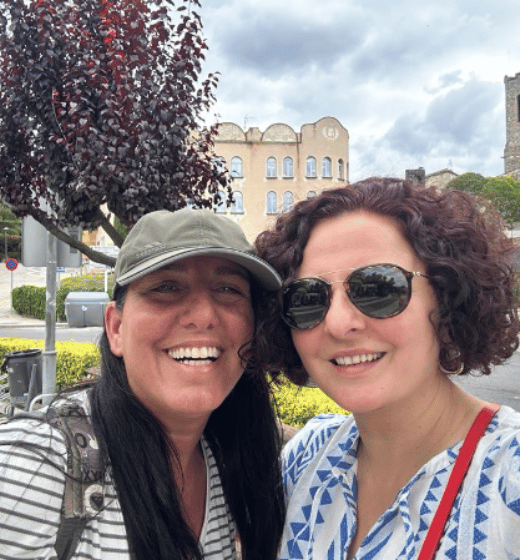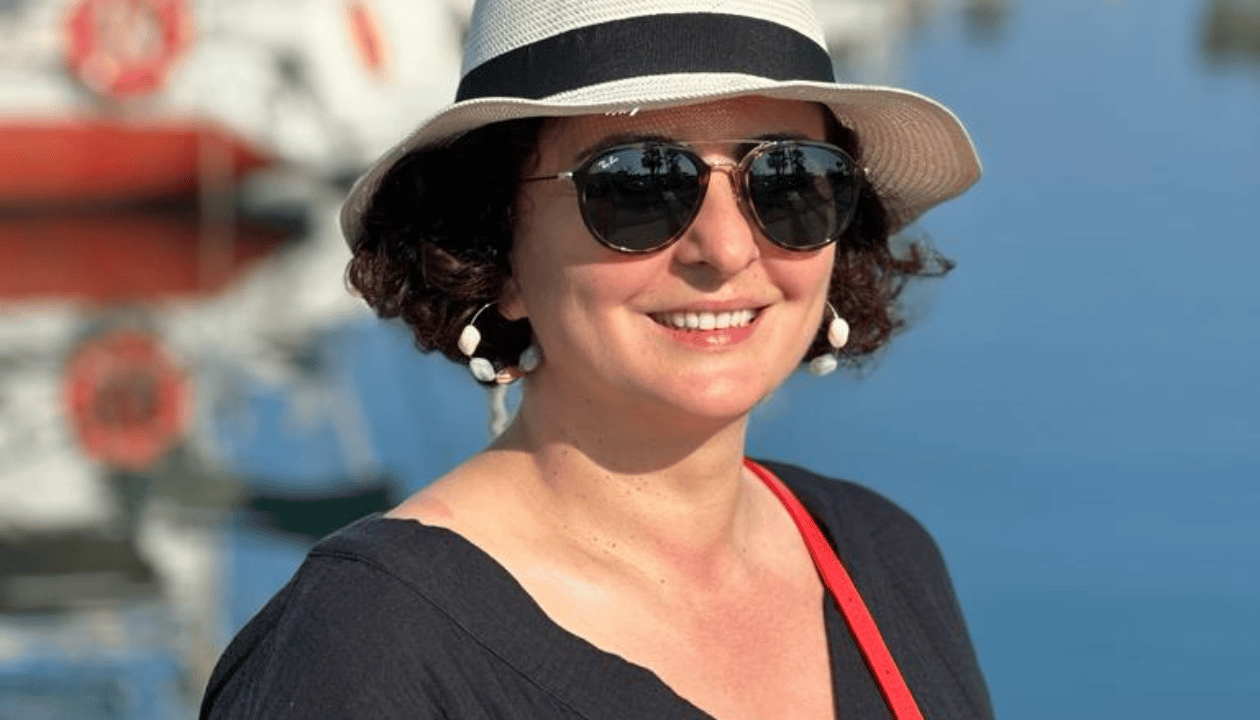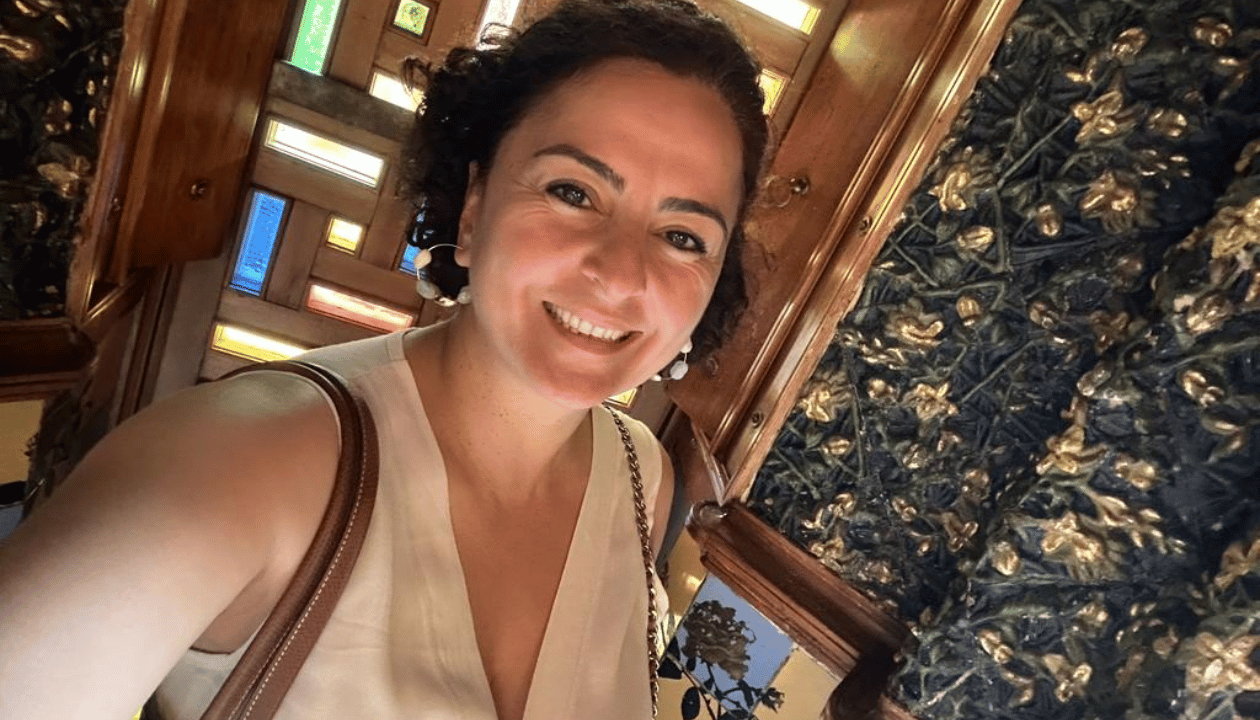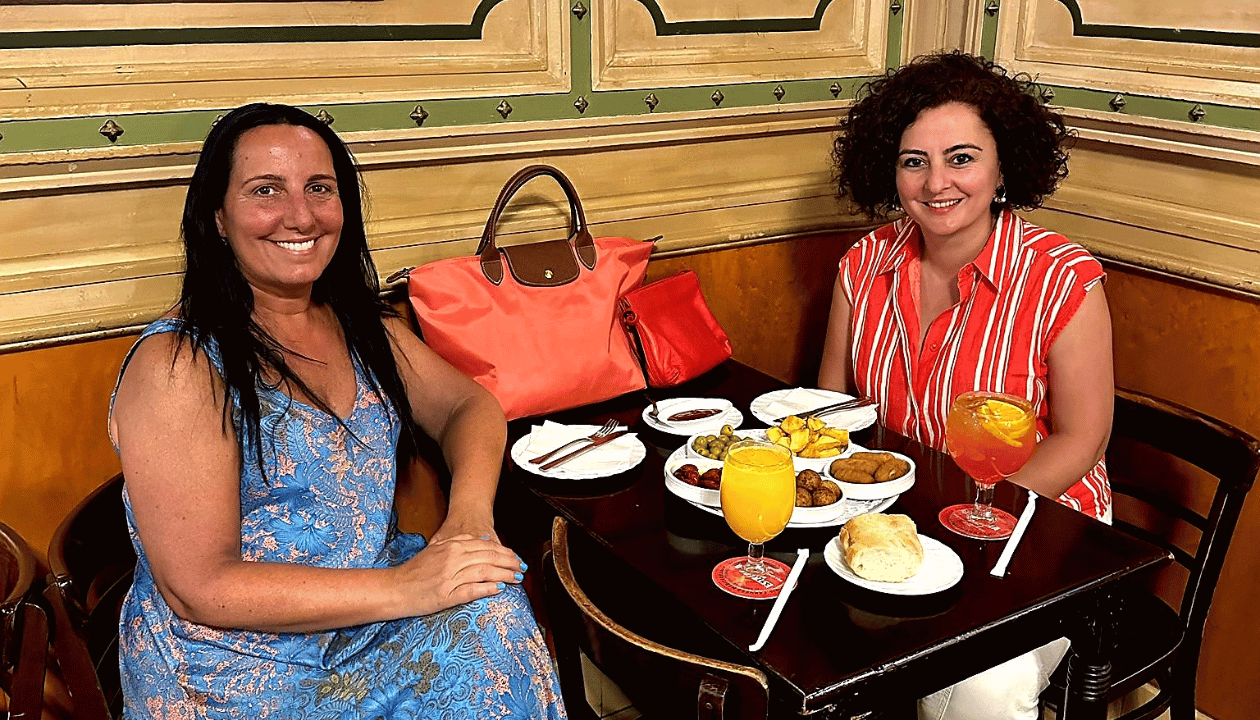

As someone who’s seen many students flourish in their new language, I find the journey of Turkish speakers learning Spanish particularly fascinating.
This article is more like an invitation to explore how the richness of Turkish culture complements the Spanish language. You’ll discover that the leap from Turkish to Spanish isn’t as vast as you might think.
From historical ties to linguistic threads that weave through both languages, this piece will illuminate the path for Turkish natives towards Spanish fluency. If you’ve ever been curious about Spanish, let this be your starting point.
Get ready to see your mother tongue in a new light and add the vibrant color of Spanish to your linguistic palette.
Similarities between Turkish and Spanish Language Skills
Turkish natives find Spanish easier to learn due to similar language skills. Their experience with native languages like Turkish, which shares rhythmic pronunciation with Spanish, helps them pick up the basics of Spanish faster. This makes starting to learn Spanish more intuitive for them.
Historical Contacts
Throughout history, Turkey and Spain have interacted, blending elements of Spanish culture into Turkish life. These contacts have introduced Spanish words into Turkish, easing the learning experience for Turkish students keen on foreign languages.
Influence on Cuisine
Cuisine is a reflection of language. Many Turkish dishes share names with their Spanish counterparts, aiding in comprehension. This culinary crossover helps Turkish students develop their Spanish vocabulary, especially in beginner Spanish courses.
Cultural Heritage in Spain
Spain’s cultural heritage, influenced by diverse civilizations, resonates with Turkish learners. This shared heritage makes understanding Spanish culture and language easier for Turkish students, enhancing their reading and listening comprehension.
Tourism and Cultural Exchange
The surge in tourism and cultural exchange between Turkey and Latin America has exposed many Turkish speakers to Mexican Spanish and other Spanish dialects. This exposure boosts their confidence in oral expression and conversation skills in Spanish.
Language Diversity in Turkey
Turkey’s linguistic diversity makes Turkish natives adept at learning other languages, including Spanish. This background aids in comprehending Spanish newspapers and media, enhancing their overall learning experience.
Modern Interactions
Modern interactions, through online platforms and interactive teaching languages, have made Spanish more accessible to Turkish learners. From learning English to Spanish, native speakers and teachers often use chat and lesson materials to make the process engaging.
List of Words of Turkish Origin in Spanish
The linguistic exchange between Turkish and Spanish, facilitated through French, has resulted in the incorporation of a substantial number of Turkish-origin words into the Spanish vocabulary. These borrowed terms encompass various aspects of everyday life, including clothing, culinary expressions, political terminology, and military terminology.
This phenomenon reflects the historical and cultural connections between the Spanish and Turkish-speaking worlds, adding a rich layer of diversity to the linguistic landscape of the Spanish language. Exploring these linguistic influences provides an intriguing glimpse into the interconnected histories and shared influences that shape languages over time.
The subsequent words are of Turkish origin and have been assimilated into Spanish.
TURKISH – SPANISH – ENGLISH
altɩn – latón – brass
baklava – baklava – baklava
balkan – balcánico – Balkan
havyar – caviar – caviar
kahve – café – coffee
köşk – quiosco/kiosko – kiosk
minare – minarete – minaret
müezzin – almuédano – muezzin
osman – otomano – Ottoman
şerbet – sorbete – sorbet
sultan – sultán – sultan
tülbent – tulipán – tulip
tülbent – turbante – turban
türk – turco – Turk
yelek – chaleco – vest
yoğurt – yogur – yogurt
zabata – zapato – shoe
Overlapping Between Spanish and Turkish Cultures
Both Spanish and Turkish cultures greatly value family, showing a deep respect for elders and a strong sense of hospitality. This shared emphasis on familial bonds can make learning each other’s native language more relatable for students, as these cultural values often reflect in language usage and expressions.
Family Importance
In both cultures, family stands as a pillar of society. This common value can enrich language courses, where students learn how family relationships influence conversational norms and expressions in both Spanish and Turkish, enhancing their understanding of the spoken language.
Respect for Elders
Respect for elders is a shared cultural trait, deeply embedded in both languages. This respect is often evident in everyday conversation and formalities, an aspect that can be highlighted in language education to enhance students’ cultural and linguistic comprehension.
Hospitality
Hospitality is a hallmark of both Spanish and Turkish cultures, often reflected in language and customs. Language teachers can use this similarity to create engaging lessons that combine language learning with cultural practices, enhancing the overall educational experience.
Differences between Turkish and a Spanish Speaking Country
Understanding the differences, such as religious influence and gender roles, between Turkish and Spanish-speaking countries, is vital for students. It aids in developing a well-rounded perspective, crucial for effective communication and cultural respect in language learning.
Religious Influence
The distinct religious influences in Spanish and Turkish cultures shape societal norms and language. Acknowledging these differences in language courses can provide students with deeper insights into how religion shapes language expressions and customs.
Gender Roles
Gender roles, varying significantly between Turkish and Spanish-speaking societies, impact language and communication. Language education that addresses these differences promotes a more comprehensive understanding of each culture, essential for students learning a new language.
Extended vs. Nuclear Families
The concept of extended and nuclear families differs between these cultures. This difference, when integrated into language courses, can offer students unique perspectives on family dynamics in different cultures, enriching their cultural knowledge and language skills.
Marriage Customs
Distinct marriage customs in Turkish and Spanish cultures offer a rich context for language learning. Exploring these customs can provide students with cultural insights, enhancing their language skills and understanding of societal norms in both cultures.
Festivals and Celebrations
Festivals and celebrations, integral to both cultures, provide exciting content for language courses. They offer students a glimpse into cultural traditions, aiding in the development of language skills and cultural appreciation.
Parental Authority
Parental authority plays a significant role in both cultures, impacting language usage and respect terms. Understanding this can enhance students’ cultural comprehension and language skills, especially in terms of formality and respect in communication.
Influence of Modernization
Modernization has uniquely influenced both Spanish and Turkish societies. Discussing this in language classes can help students understand contemporary changes in language and culture, making their education more relevant and engaging.
Read Funda’s Experience at the Spanish Homestay Immersion Program
Destination: Barcelona city, Dosrius and Mataró in El Maresme Coast
Teacher: Mónica
Student: Funda
Nationality: Turkish
Age: +45
Month: June
About Funda
As Funda’s host teacher in Barcelona, I have the pleasure of introducing a truly remarkable student. Funda, originally from Turkey and a long-term resident of London, is an embodiment of perpetual growth and adaptability.
With Turkish and English as her primary languages, her linguistic journey now extends to Spanish, a foreign language that she approaches with the same zeal that has marked her successful career in educational marketing.
Funda’s expertise, honed in the dynamic realms of technology and student needs, shines through in her methodical yet enthusiastic approach to learning Spanish. Not content with just theoretical knowledge, she immerses herself fully, aiming to capture the very essence of Spanish culture and language.
Her decision to participate in our “Live and Study at Your Teacher’s Home” program underscores her commitment to deep, authentic learning experiences. Funda’s journey is more than just acquiring the very basics in Spanish; it’s about enriching her understanding of the world, a trait that makes her an exceptional student and a culturally astute individual.
The Transition to Spanish: Cultural and Linguistic Bridges
For Funda, moving from speaking English and Turkish to Spanish has been exciting. Spanish, like English, has many words from other languages. This makes some Spanish words a bit easier for her to remember. Funda often finds words that sound like English ones.
This is really helpful for her. She also sees how Turkish culture and Spanish culture can be a bit alike. This helps her feel more connected to Spanish. We use a lot of fun activities in our course to make this learning feel natural. Funda loves to practice speaking and listening in Spanish every day.
Overcoming Linguistic Challenges
As Funda’s teacher, I’ve seen her face some language challenges. But she never gives up. Sometimes, Spanish words can be tricky. They might look like English words but mean something different. Funda works hard to understand these ‘false friends‘ as we call them.
She listens carefully and reads a lot to get better. I always remind her to take it one step at a time. Practice is key. We play games and have conversations to make this easier. Funda is always aware that making mistakes is part of learning. She’s becoming more confident in speaking Spanish every day, which comes as no surprise, as Funda is inherently a confident woman.
Immersive Learning in Montnegre I Corredor Natural Park
In Montnegre I Corredor Natural Park, I witnessed a significant leap in Funda’s Spanish skills. The tranquil setting was ideal for her to practice speaking and listening. As we explored the park, she keenly drew parallels between Spanish and her native languages, Turkish and English.
This serene natural environment provided a perfect backdrop for relaxed and focused language practice. Away from the hustle of the city, Funda engaged more freely in conversation, enhancing her comprehension and fluency in a calm, immersive setting.
Connecting Cultures: From Turkish and English to Spanish Artistry in Nau Gaudí and Casa Coll i Regàs
Exploring Nau Gaudí and Casa Coll i Regàs with Funda was a journey through Spanish artistry, enriched by her understanding of Turkish and English culture. Discussing the nuances of art across these cultures, we delved into the vocabulary of art in Spanish, making each visit an interactive language lesson.
Funda’s multilingual background provided her with unique perspectives on the similarities and differences in artistic expression. This experience not only bolstered her Spanish vocabulary but also deepened her appreciation of the cultural mosaic that shapes Spain’s artistic heritage.
Cultural Excursions: Exploring Costa del Maresme and Barcelona’s Modernist Marvels
Our trips to Costa del Maresme and Barcelona were a highlight for Funda. These places are full of history and beauty. In Barcelona, we saw amazing buildings by famous artists like Gaudí. Funda loved learning the Spanish words for different parts of the buildings.
At Costa del Maresme, she practiced her Spanish with local people. We talked about the sea, the sand, and the sun in Spanish. These trips were not just fun. They were a good way for Funda to use Spanish in real life. She learned a lot about Spanish history and culture too.
Engaging Conversations and Cuisine in Mataró’s Chiringuitos
In Mataró, Funda and I visited beach bars called chiringuitos. Here, she really got to practice her Spanish. We talked with people who make and sell food. Funda tried to order food in Spanish. Sometimes it was hard, but she did very, very well.
We ate Spanish dishes and talked about the ingredients in Spanish. Funda was happy to learn new words about food. She also learned how food is a big part of Spanish culture. These talks helped her understand and speak Spanish better. Plus, we had fun trying different foods and enjoying the beach.
Relaxation and Reflection on the Mediterranean Shores
Spending time on the Mediterranean shores was a peaceful part of our program. Funda found the beach a perfect place to relax and reflect on her Spanish learning. As she listened to the waves, she often practiced speaking Spanish with locals.
These calm moments by the sea were great for casual conversations. It helped her feel more comfortable with the language. She liked comparing Spanish with her mother tongue and English. The beach gave Funda a chance to think about how much she had learned and what she still wanted to explore in Spanish.
Educational Insights and Sharing Experiences in Mataró and Dosrius
Our time in Mataró and Dosrius was filled with learning and sharing. Funda gained many insights about Spanish culture and language. She started understanding native Spanish speakers better. We also discussed how different teaching methods can help in learning a new language like Spanish.
Funda shared her experiences and ideas from her work in education. This exchange of knowledge was valuable for both of us. As we ended our Spanish Homestay Immersion Programme (SHIP), Funda felt more confident in her Spanish skills. She was excited to keep using and improving her Spanish in her life and work.
Learn and Study Spanish in Your Teacher’s Home in Spain Just Like Funda
Discover the joy of learning Spanish, just as Funda did, by immersing yourself in the culture and language of Spain! Join us for an unforgettable journey where you’ll live and learn in your teacher’s home, experiencing Spanish life and customs firsthand. 🏡📚
Imagine waking up to the sound of waves on the Mediterranean, practicing Spanish over breakfast, and exploring the rich history and vibrant streets of cities like Barcelona and Mataró. 🌊🌇 Each day brings new adventures and learning opportunities, from engaging conversations with locals to relaxing on sun-kissed beaches. 🌞🏖️
You don’t have to just dream about it – you can live it! Whether you’re starting to learn Spanish or looking to improve your fluency, our personalized program caters to your unique learning style. 📘💬 With us, you’ll not only enhance your language skills but also gain deep cultural insights that can’t be found in any textbook. 🌍🎉
 Ready to embark on this life-changing experience? We’re excited to offer you a Free Discovery Call to discuss how our program can be tailored to your goals. 📞✨ Don’t miss this chance to transform your language skills and create lifelong memories in Spain.
Ready to embark on this life-changing experience? We’re excited to offer you a Free Discovery Call to discuss how our program can be tailored to your goals. 📞✨ Don’t miss this chance to transform your language skills and create lifelong memories in Spain.
👉 Sign up now and become part of our next exciting story! Your path to Spanish fluency and cultural immersion awaits. 🚀😊
[Click here to book your Free Discovery Call today!] 🌐📲Our Free Resources You Must Use
Jumpstart your Spanish learning journey with our curated selection of free resources! Whether you’re a beginner or looking to polish your skills, these tools are designed to help you on your way to fluency:
Spanish Lingo Gym: Flex your language muscles with interactive exercises that challenge and improve your Spanish.
Spanish Level Test: Gauge your proficiency with our comprehensive level test, tailored to help you understand your strengths and areas to develop.
Spanish Culture Quiz: Test your knowledge of Spanish traditions, history, and cultural nuances.
Newsletters: Stay updated and motivated with our regular newsletters filled with tips, cultural facts, and language learning strategies.
Blog: Dive into our blog for deeper insights into the Spanish language, learning advice, and cultural explorations.
Make the most of these tools to enhance your Spanish speaking, reading, and comprehension skills. They’re fun, free, and fantastic for learners of all levels! 📘💃🕺📝
Is Spanish easy to learn for Turkish speakers?
Spanish may be easier for Turkish speakers to learn compared to other languages because both have phonetic spelling and similar grammatical structures such as verb conjugations. However, vocabulary and syntax differences present some challenges.
What is the easiest language to learn for native Turkish speakers?
For native Turkish speakers, Azerbaijani and other Turkic languages are typically the easiest to learn due to linguistic and cultural similarities. Languages with simple grammar and familiar vocabulary, like Spanish or Italian, might also be easier to learn.
How can I learn to speak Spanish like a native?
To speak Spanish like a native, immerse yourself in the language as much as possible. Engage with native speakers, listen to Spanish media, and practice speaking regularly. Focusing on the local dialects and cultural nuances can also greatly enhance your fluency.







